Stylish DIY Throw Blankets for Your Home
Are you ready to transform your living space into a cozy haven? Throw blankets are the perfect addition to any home, providing both warmth and style. Imagine curling up on your couch with a soft, beautifully crafted throw blanket draped over your shoulders while you binge-watch your favorite series or read a good book. Not only do these blankets add a layer of comfort, but they also serve as a fantastic way to express your personal style. In this article, we’ll explore creative ideas for making your own stylish throw blankets that can enhance your home décor while providing warmth and comfort. From choosing the right materials to mastering basic knitting and crochet techniques, you’ll have everything you need to get started on your DIY journey.
When it comes to creating a cozy throw blanket, selecting the right materials is absolutely crucial. After all, you want something that not only looks good but feels good too! There are several fabric options available, each with its unique benefits. For instance, fleece is incredibly soft and warm, making it perfect for those chilly nights. On the other hand, cotton is breathable and easy to care for, ideal for year-round use. If you’re looking for something a bit more luxurious, wool provides excellent insulation and has a lovely texture that can elevate any room’s aesthetic.
Here’s a quick rundown of some popular materials you might consider:
| Material | Benefits |
|---|---|
| Fleece | Soft, warm, and lightweight |
| Cotton | Breathable, easy to wash, versatile |
| Wool | Warm, durable, and moisture-wicking |
If you’re ready to dive into the world of knitting, you’re in for a treat! Knitting can be a relaxing and rewarding hobby, and it’s perfect for crafting beautiful throw blankets. To get started, you’ll need to familiarize yourself with some essential knitting techniques. Begin with basic stitches like the knit and purl stitches, which form the foundation of most patterns. Once you’ve got these down, you can experiment with different patterns and textures that will make your blanket truly unique.
Did you know that the type of yarn you choose can significantly impact the texture and warmth of your blanket? There’s a whole world of yarn out there, from acrylic to natural fibers and blends. Each type offers its own set of characteristics that can enhance your project. For instance, acrylic yarn is affordable and comes in a plethora of colors, while natural fibers like cotton and wool provide a more luxurious feel. When selecting yarn, consider the purpose of your blanket and the climate you live in to ensure you make the best choice.
The color and pattern of your throw blanket can transform it into a stunning focal point in your room. Think about the overall theme of your home décor. Do you prefer bold colors that pop, or are you leaning towards subtle, muted tones? Combining different colors and patterns can create a visually appealing design that ties your space together. Don’t be afraid to experiment with contrasting colors or playful patterns to showcase your personality!
Incorporating different stitches can add texture and depth to your throw blanket, making it visually interesting. Techniques like the basketweave, cable, or seed stitch can elevate the overall look of your project. By varying the stitches, you can create a blanket that not only feels cozy but also looks stunning draped over your couch or bed.
If knitting isn’t your thing, don’t worry! Crocheting is another fantastic method for creating stylish throw blankets. The basic crochet stitches, such as the chain stitch and double crochet, are easy to learn and can lead to beautiful results. With a little practice, you’ll be able to craft your cozy designs in no time!
What better way to make your throw blanket truly unique than by adding personal touches? From embroidery to appliqué, there are countless ways to customize your creation. You might choose to add your initials, a favorite quote, or even a fun design that reflects your personality. Personalizing your blanket not only makes it special but also turns it into a treasured keepsake.
Fringe and borders can take your throw blanket to the next level! These finishing touches can give your blanket a polished and stylish appearance. Adding fringe is simple: just cut lengths of yarn or fabric and attach them to the edges. For borders, consider using a contrasting color to frame your blanket beautifully. These small details can make a big difference!
Finally, proper maintenance is essential for keeping your throw blanket looking great. Each material has its care requirements, so be sure to follow the washing, drying, and storing instructions. For instance, wool blankets may need to be hand-washed, while cotton can often go in the washing machine. By taking good care of your creation, you’ll prolong its life and maintain its beauty.
- What materials are best for a throw blanket? It depends on your preference! Fleece, cotton, and wool are all great options.
- Can I knit a blanket if I'm a beginner? Absolutely! Start with basic stitches and patterns, and you’ll be crafting beautiful blankets in no time.
- How do I personalize my throw blanket? You can use embroidery, appliqué, or even fabric paint to add your unique touch.

Choosing the Right Materials
When it comes to creating a cozy throw blanket, is absolutely essential. The fabric you select not only affects the overall warmth and comfort of the blanket but also its aesthetic appeal. Imagine wrapping yourself in a soft, fluffy blanket on a chilly evening; that experience is largely determined by the materials you use. In this section, we’ll explore various fabric options, including fleece, cotton, and wool, each with its unique benefits.
Fleece is a popular choice for throw blankets because of its incredible softness and warmth. It’s lightweight yet provides excellent insulation, making it perfect for snuggling on the couch or adding a layer of comfort to your bed. Plus, fleece comes in a variety of colors and patterns, allowing you to express your personal style effortlessly. If you’re looking for an easy-to-work-with fabric that doesn’t fray, fleece might just be your best bet!
On the other hand, cotton is a versatile fabric that brings a different kind of charm to your throw blanket. Cotton is breathable and hypoallergenic, making it an ideal choice for those with sensitive skin. It’s also easy to care for, as most cotton fabrics are machine washable. If you want a blanket that can transition through the seasons, cotton is a fantastic option. You can create a lightweight throw for summer evenings or layer it with other fabrics for extra warmth during winter.
Now, let’s talk about wool. This natural fiber is renowned for its insulating properties, making it a classic choice for throw blankets. Wool is not only warm but also moisture-wicking, meaning it can keep you dry and comfortable even in cooler temperatures. However, it’s important to note that wool can be a bit scratchy for some people, so if you’re sensitive to textures, you might want to opt for softer blends or merino wool, which is known for its luxurious feel.
To help you visualize the differences between these materials, here’s a quick comparison table:
| Material | Warmth | Softness | Care Instructions |
|---|---|---|---|
| Fleece | High | Very Soft | Machine Washable |
| Cotton | Medium | Soft | Machine Washable |
| Wool | High | Variable (Soft to Scratchy) | Hand Wash or Dry Clean |
Ultimately, the best material for your throw blanket will depend on your personal preferences and how you plan to use it. Are you looking for something to keep you warm during winter nights, or do you want a lightweight option for summer? Do you prioritize softness, or is durability more important to you? By considering these factors, you can choose the perfect fabric that aligns with your needs.
In addition to the main fabric, don’t forget about the thread and yarn you’ll use for stitching or crocheting your blanket. These materials can also impact the overall look and feel of your creation. For instance, using contrasting colors can make your blanket pop, while matching thread can create a more seamless appearance. The choices are endless, and that’s what makes creating your own throw blanket such a rewarding experience!
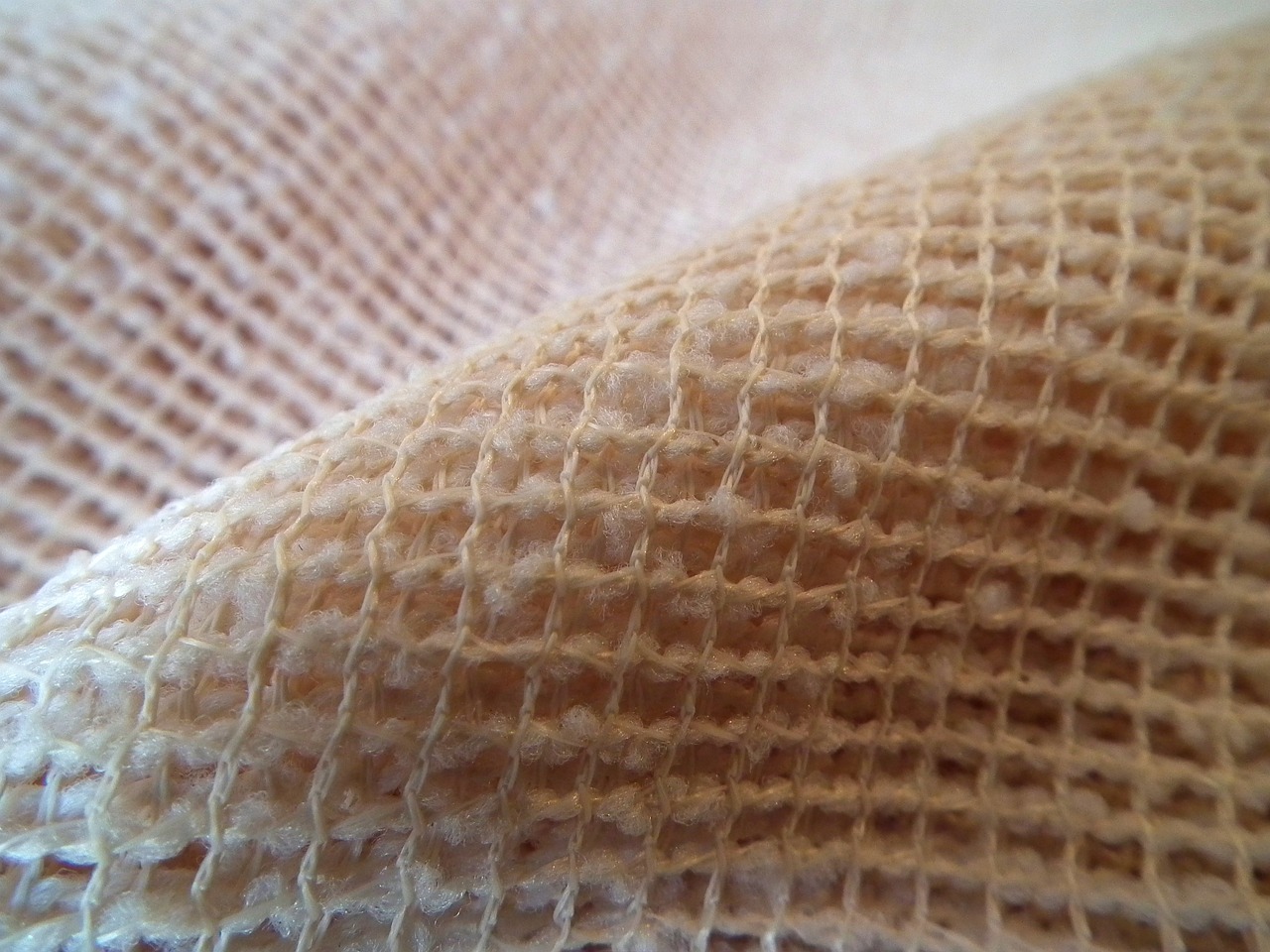
Basic Knitting Techniques
Knitting is not just a hobby; it’s a wonderful way to express your creativity and warmth through fabric. If you’re just starting out, it might seem a bit daunting, but fear not! With a few basic techniques under your belt, you’ll be well on your way to crafting your own stylish throw blankets that will not only keep you cozy but also add a personal touch to your home décor.
First things first, let’s talk about the essential knitting stitches. The most fundamental stitch is the knit stitch, which creates a smooth, textured fabric. You’ll also want to master the purl stitch, which is essentially the opposite of the knit stitch. When you combine these two stitches, you can create various patterns that can make your throw blanket truly unique. For instance, alternating between knit and purl stitches can form a beautiful ribbing effect that adds depth and interest to your project.
Another technique to consider is the casting on method, which is how you start your knitting. The long tail cast on is popular among beginners because it’s easy to learn and creates a nice, stretchy edge. Once you’ve cast on your stitches, you’ll want to familiarize yourself with binding off, which is how you finish your project. This technique secures the last row of stitches, ensuring that your blanket doesn’t unravel. Remember, the way you bind off can affect the stretchiness of your blanket's edge, so it’s worth practicing a few different methods.
As you dive deeper into the world of knitting, you might want to explore more complex patterns. For example, cables and lace work can elevate your throw blanket from simple to stunning. Cables create a braided effect that adds a lovely texture, while lace patterns introduce delicate designs that can give your blanket an airy feel. Don’t worry if these techniques seem challenging at first; with practice, you’ll find that knitting is all about patience and perseverance.
When it comes to choosing the right needles, size matters! The size of your knitting needles will influence the gauge of your fabric. Thicker needles will create a looser, more open fabric, while thinner needles will yield a tighter weave. It’s essential to match your needle size with your yarn type to achieve the desired look and feel of your throw blanket. If you’re unsure, consider doing a gauge swatch before starting your project to ensure everything turns out just right.
Lastly, let’s not forget about the joys of knitting in the round. This technique allows you to create seamless blankets, which can be particularly appealing for larger projects. Using circular needles, you can knit a continuous tube, which can then be transformed into a cozy throw. Just imagine curling up with a blanket that you crafted entirely by hand!
With these basic knitting techniques, you’re well on your way to creating beautiful throw blankets that reflect your personal style. Remember, the key is to practice and enjoy the process. Knitting is as much about the journey as it is about the finished product. So grab your needles, choose your yarn, and let your creativity flow!
- What materials do I need to start knitting? You will need yarn, knitting needles, and a pair of scissors. Optional items include a measuring tape and a yarn needle for weaving in ends.
- How long does it take to knit a throw blanket? The time it takes can vary greatly depending on your skill level, the complexity of the pattern, and the size of the blanket. It can take anywhere from a few days to several weeks.
- Can I knit a blanket if I’m a beginner? Absolutely! Start with simple patterns and gradually work your way up to more complex designs as you gain confidence.
- What is the best yarn for a throw blanket? Soft, durable yarns such as acrylic or a wool blend are great choices for throw blankets as they provide warmth and comfort.
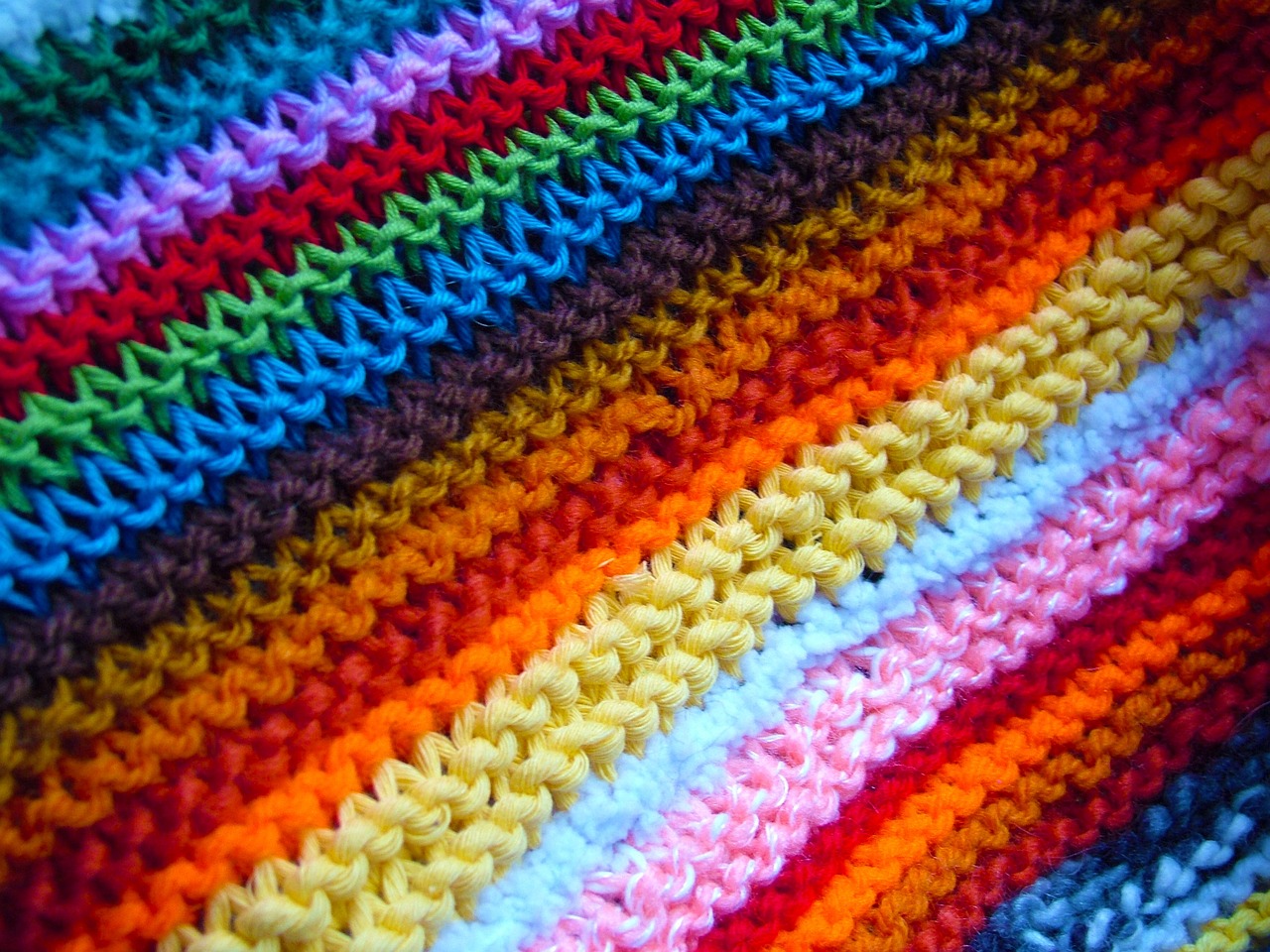
Understanding Yarn Types
When it comes to crafting the perfect throw blanket, choosing the right yarn is just as important as selecting the right pattern. The type of yarn you choose can dramatically affect the texture, warmth, and overall aesthetic of your blanket. With so many options available, it can be overwhelming to know where to start. Let’s break it down!
First off, you have acrylic yarn, which is a popular choice for many crafters. It’s affordable, widely available, and comes in a rainbow of colors. Acrylic is also durable and easy to care for, making it a great option for blankets that will see a lot of use. However, it’s worth noting that acrylic might not provide the same level of warmth as some natural fibers. Think of it as the trusty friend who’s always ready for a fun night out but might not be the best choice for a cozy night in.
Next up is wool yarn. This natural fiber is renowned for its incredible warmth and softness. Wool has a unique ability to regulate temperature, which means it can keep you warm in the winter and cool in the summer. It’s like having a personal climate control system, but in yarn form! However, if you or someone in your household has sensitive skin, you may want to consider alternatives, as some people find wool to be a bit itchy.
Then we have cotton yarn. Cotton is perfect for those who prefer a lighter, more breathable material. It’s especially great for warmer climates or for crafting lightweight throws that can be used year-round. Think of cotton as the refreshing iced tea on a hot summer day—cool, soothing, and oh-so-comforting! However, cotton can be less elastic than other fibers, which might affect the structure of your blanket over time.
For those looking to combine the best of both worlds, blended yarns are an excellent option. These yarns mix different fibers, such as acrylic and wool or cotton and polyester, to create a material that boasts the benefits of each. It’s like a delicious smoothie that brings together all your favorite fruits for a tasty treat! Blended yarns can provide added durability, softness, and warmth, making them a versatile choice for your throw blanket.
Now, let’s not forget about the importance of yarn weight. Yarn comes in various weights, from lace to bulky, and this can significantly impact the final look and feel of your blanket. A thicker yarn will create a plush, cozy blanket, while a lighter yarn can result in a delicate, airy piece. When choosing your yarn, consider the project's purpose and how you want it to feel. Do you want a blanket that envelops you in warmth, or one that’s light and easy to drape over your couch?
In summary, understanding the different types of yarn can help you make an informed decision that aligns with your vision for your throw blanket. Whether you opt for the affordability of acrylic, the warmth of wool, the breathability of cotton, or the versatility of blended yarns, each choice brings its own unique flair to your creation. So, as you embark on your DIY journey, remember that the right yarn can make all the difference in crafting a throw blanket that’s not just functional, but also a stunning addition to your home décor!
- What is the best yarn for beginners? Acrylic yarn is often recommended due to its affordability and ease of use.
- Can I mix different yarn types? Yes! Blended yarns can offer the best of both worlds, but mixing different types can also create unique textures.
- How do I choose the right yarn weight? Consider the desired thickness of your blanket and the season in which you’ll use it.

Choosing Colors and Patterns
When it comes to crafting your own stylish throw blanket, the colors and patterns you choose can make a world of difference. Think of your throw blanket as a piece of art that not only serves a functional purpose but also enhances the overall aesthetic of your home. So, how do you go about selecting the perfect palette that reflects your personality while harmonizing with your décor?
First, consider the color scheme of the room where your blanket will reside. Are the walls painted in soft pastels, or do they boast bold, vibrant hues? A throw blanket can either complement or contrast these colors. For instance, if your room is adorned with neutral tones, a blanket in a rich jewel tone can serve as a stunning focal point. Alternatively, if your space is already colorful, you might want to opt for a more muted, monochromatic blanket that ties everything together without overwhelming the senses.
Next, think about the patterns. Patterns can add depth and interest to your blanket. You might choose classic stripes, playful polka dots, or intricate floral designs. The key is to find a pattern that resonates with your style. For example, if you love a bohemian vibe, a blanket with tribal patterns could be a perfect match. On the other hand, if your taste leans towards modern minimalism, geometric shapes might be the way to go. Remember, patterns can also be mixed, but it’s essential to maintain a sense of balance. A good rule of thumb is to pair a bold pattern with a more subtle one to avoid visual chaos.
Here’s a little tip: use a color wheel to help guide your choices. Complementary colors (those opposite each other on the wheel) can create a striking look, while analogous colors (those next to each other) offer a more harmonious feel. If you're feeling adventurous, consider a monochromatic scheme—using different shades of the same color can create a sophisticated and cohesive look.
Lastly, don’t forget to consider the seasonal aspect of your blanket. Lighter, airy colors might be more suitable for spring and summer, while deeper, richer tones can evoke warmth during the fall and winter months. This not only keeps your décor fresh but also allows you to express your creativity throughout the year.
In summary, choosing the right colors and patterns for your DIY throw blanket is all about expressing your unique style while ensuring it complements your home. Whether you go bold or subtle, the choices you make will undoubtedly add a personal touch to your living space.
| Color Scheme | Possible Patterns | Vibe |
|---|---|---|
| Neutral Tones | Floral, Geometric | Calm and Relaxing |
| Bold Colors | Stripes, Polka Dots | Fun and Energetic |
| Pastels | Tribal, Abstract | Bohemian and Artsy |

Creating Texture with Stitches
When it comes to crafting a cozy throw blanket, texture is everything. It’s what makes your blanket not just a source of warmth, but also a visual delight. Think of texture as the icing on the cake; while the cake itself is delicious, the icing adds that extra appeal that makes it irresistible. By using different stitches, you can create a range of textures that can transform your throw blanket from ordinary to extraordinary.
One of the most popular ways to add texture is through the use of stitch techniques. Whether you're knitting or crocheting, the choice of stitches can dramatically change the feel and look of your project. For instance, the seed stitch creates a lovely bumpy texture that’s both interesting and tactile. Imagine snuggling up with a blanket that not only keeps you warm but also feels delightful against your skin!
Another fantastic technique is the basketweave stitch. This stitch mimics the look of woven baskets, adding depth and dimension to your blanket. It's perfect for a rustic or farmhouse style home. If you want to dive into something a bit more intricate, consider the cable stitch. This stitch looks like twisted ropes and can give your blanket a sophisticated, luxurious feel. Just picture how stunning a cable-knit throw would look draped over your sofa!
For those who love the look of intricate designs, the shell stitch is a must-try. This stitch creates a series of scallops that can add a feminine touch to your blanket. You can use it along the borders or throughout the entire blanket for a more dramatic effect. If you want to go for something even more eye-catching, try combining stitches. Mixing the basketweave with the shell stitch can create a truly unique piece that showcases your creativity.
To help you visualize these techniques, here’s a quick comparison of some popular stitch types:
| Stitch Type | Texture Description | Best For |
|---|---|---|
| Seed Stitch | Bumpy and textured | Casual, cozy blankets |
| Basketweave Stitch | Woven appearance | Rustic or farmhouse style |
| Cable Stitch | Twisted rope look | Luxurious, sophisticated designs |
| Shell Stitch | Scalloped edges | Feminine, delicate styles |
Incorporating these various stitches into your throw blanket not only enhances its aesthetic appeal but also provides a unique tactile experience. When you're snuggled up on a chilly evening, the different textures will give you a sense of comfort and warmth that goes beyond just physical heat. Plus, the act of creating these textures can be incredibly satisfying, allowing you to express your creativity and personal style.
So, grab your yarn and needles, and let your imagination run wild! Experiment with different stitches and see how they change the look and feel of your blanket. Remember, the journey of creation is just as fulfilling as the final product. Happy crafting!
- What materials are best for creating textured stitches? Natural fibers like wool and cotton tend to hold texture well, but acrylic yarns can also be used effectively.
- Can I mix different stitch types in the same blanket? Absolutely! Mixing stitch types can add visual interest and uniqueness to your blanket.
- How do I choose the right stitch for my blanket? Consider the overall style you want to achieve and the level of difficulty you’re comfortable with. Start with basic stitches and gradually incorporate more complex ones as you gain confidence.
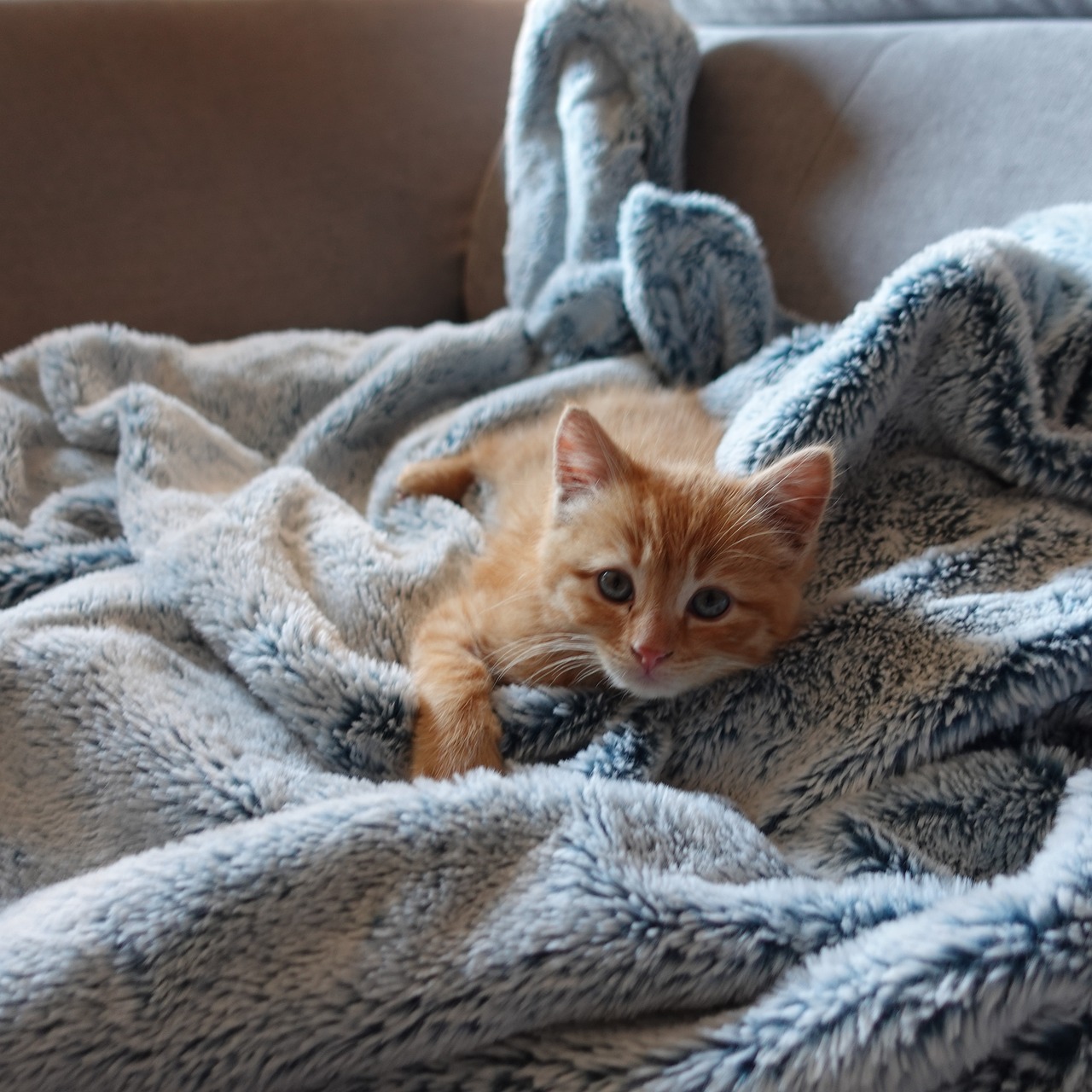
Basic Crochet Techniques
Crocheting is a fantastic way to create stylish throw blankets that not only provide warmth but also add a personal touch to your home décor. If you’re new to crocheting, don’t worry! It’s easier than it looks, and with a little practice, you’ll be whipping up beautiful blankets in no time. To get started, you’ll need a few basic tools: a crochet hook, yarn, and a pair of scissors. The great thing about crochet is that you can experiment with different hook sizes and yarn types to achieve various textures and looks.
When it comes to crochet, the first thing you’ll want to learn is how to make a slip knot, which serves as the foundation for any crochet project. From there, you can dive into some essential stitches that will form the backbone of your blanket. Here are a few basic stitches you should master:
- Chain Stitch (ch): This is the most fundamental stitch and is often used to start your project.
- Single Crochet (sc): A tight stitch that creates a dense fabric, perfect for warm blankets.
- Double Crochet (dc): This stitch is taller and looser, allowing for more drape and texture.
- Half Double Crochet (hdc): A versatile stitch that falls between single and double crochet, offering a nice balance.
Once you’re comfortable with these stitches, you can start to experiment with different patterns. For beginners, it’s often best to choose simple patterns that repeat, as they’re easier to follow and will help you build your confidence. Think of it as learning to ride a bike; once you get the hang of it, you can start to explore more complex designs!
Don’t forget, the yarn you choose can greatly affect the outcome of your blanket. Lighter yarns like cotton are great for summer throws, while thicker yarns such as wool will provide extra warmth during colder months. Play around with different yarn weights and textures to see what you enjoy working with the most. And remember, crochet is all about creativity! Feel free to incorporate different colors and patterns to make your throw blanket uniquely yours.
As you progress, you might want to explore more advanced techniques, like changing colors mid-project or adding decorative elements such as shells or popcorn stitches. These techniques can add a stunning visual appeal to your blanket and make it stand out even more. Just remember to take your time, enjoy the process, and don’t be afraid to make mistakes—they’re a part of learning!
In summary, mastering basic crochet techniques is the first step towards creating your own stylish throw blankets. With the right materials and a bit of practice, you’ll be able to craft cozy, beautiful pieces that reflect your personal style and enhance your home décor.
Q: What materials do I need to start crocheting?
A: To start crocheting, you will need a crochet hook, yarn, and scissors. You may also want a measuring tape and a yarn needle for finishing touches.
Q: How long will it take to learn basic crochet techniques?
A: The time it takes to learn varies by individual, but many beginners can grasp the basics within a few hours of practice.
Q: Can I use any type of yarn for my throw blanket?
A: While you can use any yarn, it's best to choose one that matches the desired warmth and texture of your blanket. Wool is great for warmth, while cotton is ideal for lighter throws.
Q: Are there patterns available for beginners?
A: Yes! There are plenty of beginner-friendly crochet patterns available online, many of which include step-by-step instructions and videos.
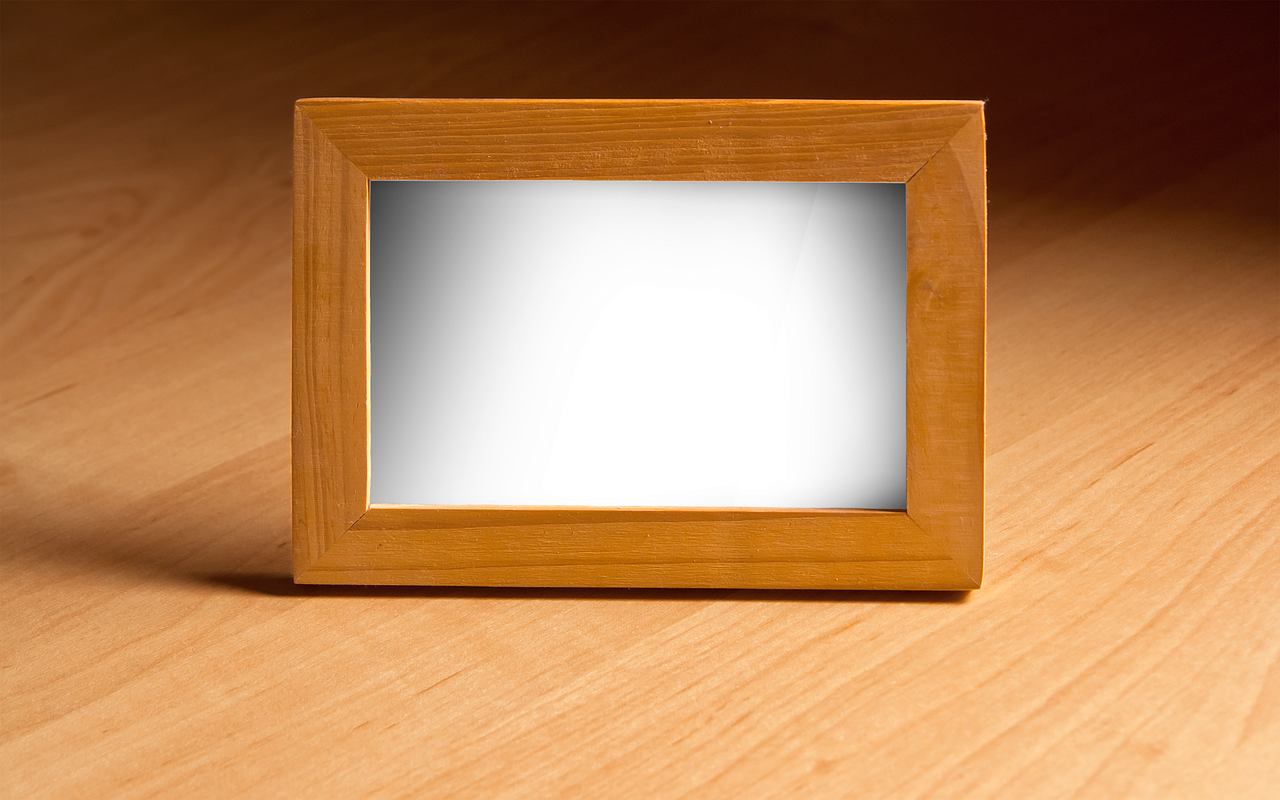
Personalizing Your Blanket
When it comes to throw blankets, adding a personal touch can turn a simple piece of fabric into a cherished keepsake. Personalization doesn’t just make your blanket unique; it also transforms it into a reflection of your personality and style. Whether you’re crafting a blanket for yourself or as a thoughtful gift, there are numerous ways to infuse your creativity into your project.
One of the simplest yet most effective ways to personalize your throw blanket is through embroidery. This technique allows you to add names, initials, or even meaningful quotes that resonate with you or the recipient. Imagine snuggling under a blanket that features your family’s name or a favorite saying—it instantly adds warmth and sentiment. To get started, you can use embroidery floss and a needle to stitch directly onto the fabric, or you can opt for iron-on patches that can easily be applied without any sewing skills.
Another exciting method for personalization is through appliqué. This technique involves sewing a piece of fabric onto your blanket to create a design or shape. You could choose shapes that represent your interests—like stars for a night sky theme or floral patterns that bring a touch of nature indoors. The beauty of appliqué is that it adds dimension and texture to your blanket, making it visually appealing and unique. Plus, it’s a fun way to use up leftover fabric scraps!
Don’t forget about color choices when personalizing your throw blanket. Selecting colors that resonate with your personal style or match your home décor can make a significant difference. For instance, if your living room has a calming blue theme, consider using shades of blue and white in your blanket. This not only ensures that your blanket complements your space but also creates a cohesive look that ties everything together.
For those who enjoy a bit of flair, consider adding fringe or decorative borders to your blanket. These finishing touches can elevate the overall design and provide a polished look. A fringed edge can give a bohemian vibe, while a neatly sewn border can add a touch of elegance. You can choose contrasting colors for the fringe or border to make it pop, or stick to a monochrome palette for a more sophisticated appearance.
Finally, think about the story behind your blanket. Every stitch and design choice can tell a tale. Perhaps you’re creating a blanket that celebrates a special occasion, like a wedding or a new baby. Incorporating elements that reflect these moments—like wedding dates or baby footprints—can transform your blanket into a treasured heirloom. Remember, the beauty of DIY projects is that they allow you to express your creativity and make something that is truly one-of-a-kind.
- What materials are best for personalizing a throw blanket? Cotton and fleece are great choices, as they are easy to work with and hold embroidery well.
- Can I personalize a store-bought blanket? Yes! You can add patches, embroidery, or even fabric paint to customize a purchased blanket.
- How do I care for a personalized blanket? Follow the washing instructions for the fabric and consider hand washing if it has delicate embroidery or appliqué.
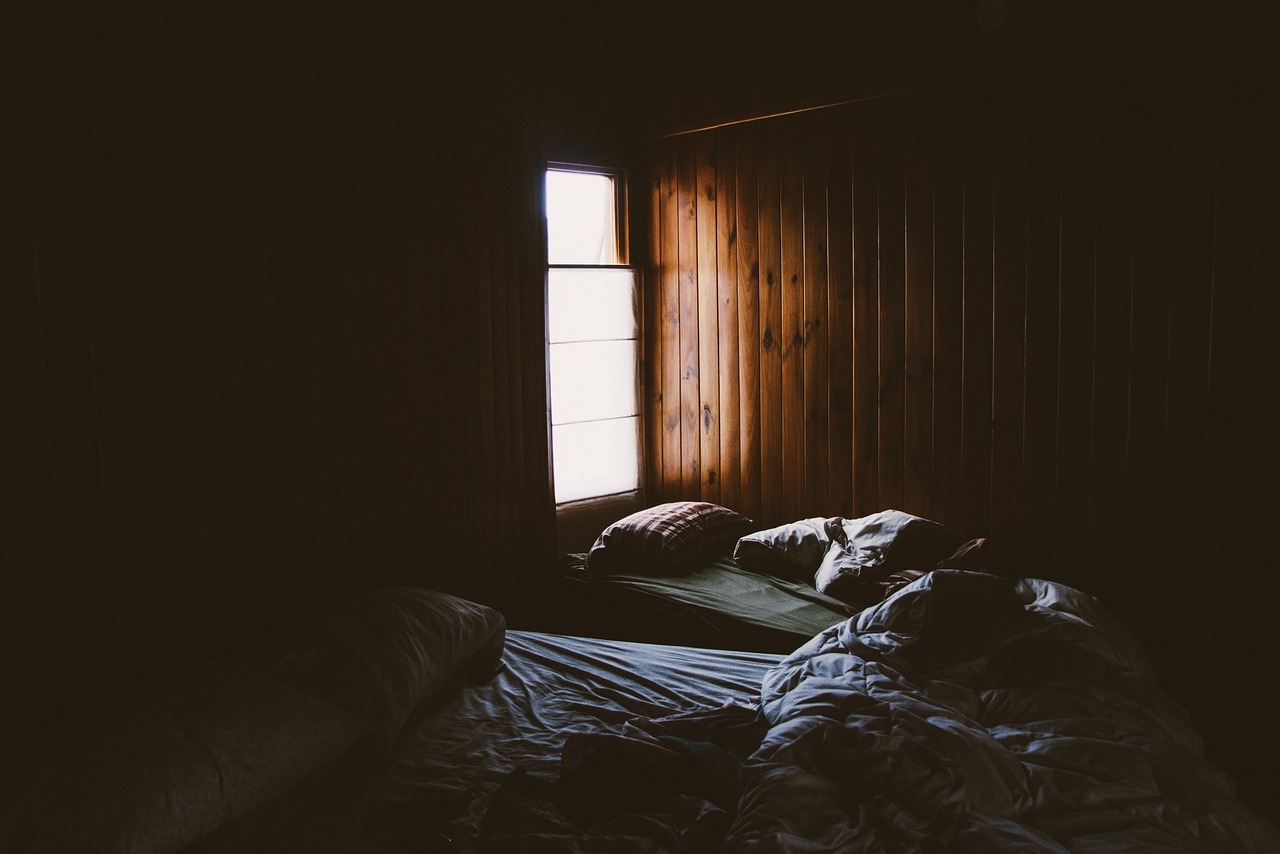
Adding Fringe and Borders
When it comes to making your throw blanket truly stand out, can make all the difference. Think of your blanket as a canvas, and these elements as the finishing touches that elevate its overall aesthetic. Fringe not only adds a playful touch, but it can also bring a sense of movement and texture to your blanket, making it feel more dynamic and inviting. So, how do you go about incorporating these stylish features into your design?
First, let’s talk about fringe. It’s surprisingly simple to add fringe to your throw blanket. You can either use the same yarn as your blanket or choose a contrasting color for a more striking effect. To create fringe, cut multiple strands of yarn to your desired length—typically around 6 to 8 inches works well. Then, fold each strand in half and use a crochet hook or your fingers to pull the folded end through the edge of your blanket, creating a loop. Pull the ends of the strand through this loop and tighten it. Repeat this process along the edges of your blanket, spacing the strands evenly to achieve a balanced look.
Now, let’s dive into borders. A border can frame your blanket beautifully, providing a polished and cohesive look. You can opt for a simple single crochet border or get creative with different stitch patterns. For example, a scalloped border adds a charming, feminine touch, while a ribbed border can give your blanket a modern edge. To create a border, start by making a foundation row around the entire perimeter of your blanket. Then, work your chosen stitch pattern to build up the border. This not only enhances the visual appeal but also reinforces the edges, making your blanket more durable.
Here’s a quick comparison of fringe and borders to help you decide which might suit your style better:
| Feature | Fringe | Border |
|---|---|---|
| Style | Casual, playful | Polished, structured |
| Complexity | Easy | Moderate |
| Functionality | Adds texture | Reinforces edges |
Incorporating these elements into your throw blanket design allows for a personal touch that reflects your unique style. Whether you go for a fun, bohemian vibe with long, colorful fringe or a sleek, modern look with a sophisticated border, the choice is yours! Remember, the key is to experiment and have fun with the process. After all, crafting your throw blanket is not just about the end product, but also about enjoying the journey of creating something special.
- How do I choose the right length for my fringe? A good rule of thumb is to cut your fringe strands about twice the length you want them to hang. This allows for some shrinkage once they are tied off.
- Can I mix different types of yarn for my borders? Yes, mixing yarn types can create interesting textures! Just make sure they have similar care instructions to avoid issues later.
- How do I care for my fringed blanket? Be cautious when washing; it’s best to hand wash or use a gentle cycle to prevent tangling or damage to the fringe.
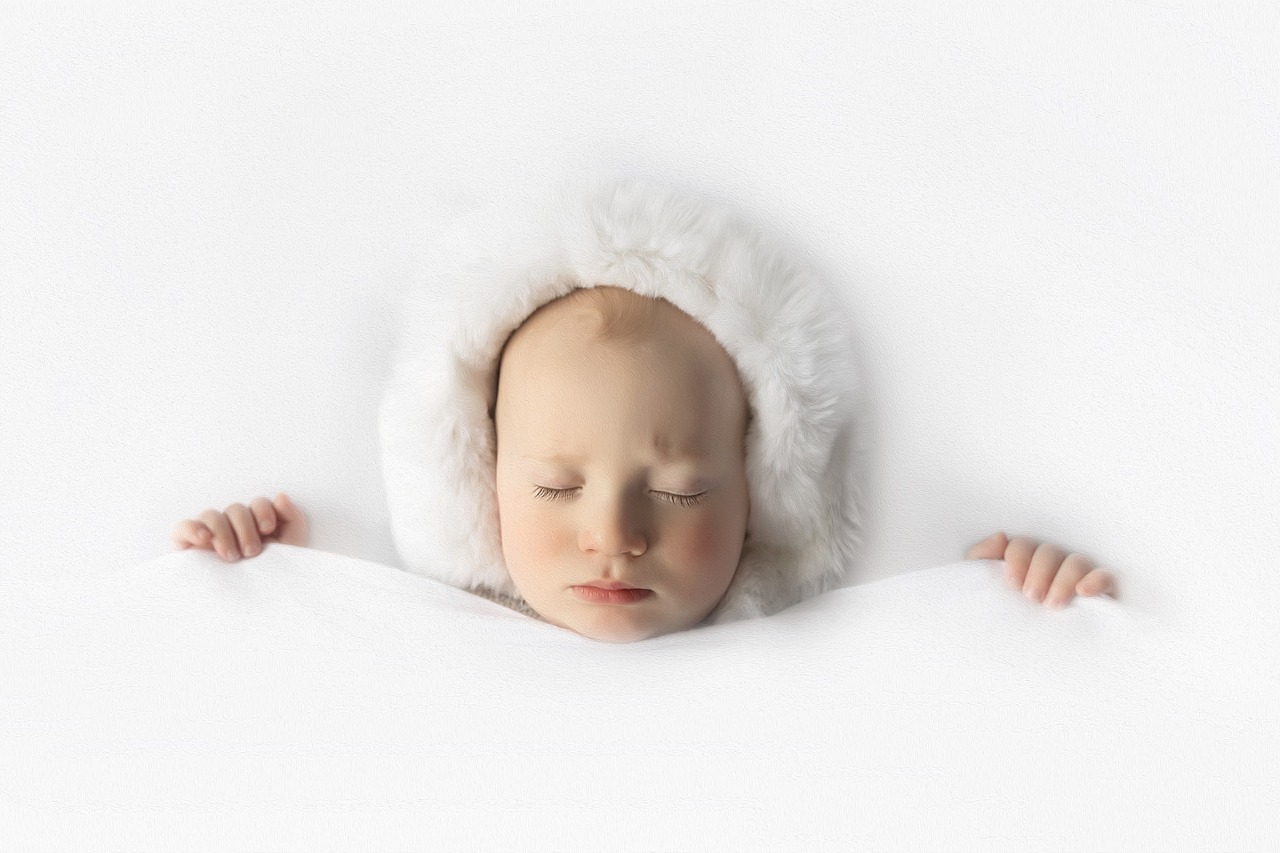
Maintenance and Care
Explore creative ideas for making your own stylish throw blankets that can enhance your home décor while providing warmth and comfort. Discover various materials, techniques, and design inspirations to get started.
Selecting the right materials is crucial for creating a cozy throw blanket. Explore various fabric options, including fleece, cotton, and wool, and their unique benefits for warmth and aesthetics.
Learn essential knitting techniques that will help you craft beautiful throw blankets. This section covers basic stitches, patterns, and tips for beginners to create their own unique designs.
Different yarn types can significantly impact the texture and warmth of your blanket. Discover the various yarn materials available, including acrylic, natural fibers, and blends, to choose the best for your project.
Color and pattern selection can transform your throw blanket into a stunning focal point. Explore tips for combining colors and patterns that complement your home décor style.
Incorporating different stitches can add texture and depth to your throw blanket. Learn about popular stitch techniques that can enhance the visual appeal of your project.
Crocheting is another popular method for making stylish throw blankets. This section introduces basic crochet stitches, patterns, and techniques to help you create your own cozy designs.
Adding personal touches to your throw blanket can make it truly unique. Explore various ways to personalize your blanket, from embroidery to appliqué, ensuring it reflects your style.
Fringe and borders can elevate the overall look of your throw blanket. Learn how to create and attach these finishing touches for a polished and stylish appearance.
Proper maintenance is essential for keeping your throw blanket looking great and lasting for years to come. Depending on the material, the care instructions can vary significantly, so it’s important to pay attention to the specific needs of your blanket. For instance, fleece blankets are generally machine washable and quick-drying, while wool blankets may require more delicate handling.
Here are some essential tips to ensure your throw blanket stays in top condition:
- Washing: Always check the care label before washing. Most cotton and acrylic blankets can be washed in cold water, while wool may need gentle cycles or hand washing.
- Drying: Air drying is often best for preserving the shape and texture of your blanket. If you must use a dryer, opt for a low heat setting.
- Storing: When not in use, fold your blanket neatly and store it in a cool, dry place. Avoid direct sunlight to prevent fading.
Additionally, if your blanket has any embellishments like fringe or embroidery, be sure to handle it with care during washing to avoid damage. Regularly check for any signs of wear and tear, and address them promptly to prolong the life of your cozy creation.
Here are some common questions regarding the maintenance and care of throw blankets:
- How often should I wash my throw blanket? It depends on usage. If it’s used frequently, washing it every few weeks is ideal, but if it’s just for decoration, a monthly wash might suffice.
- Can I use fabric softener? It’s best to avoid fabric softeners, especially on fleece and microfiber, as they can reduce the blanket’s softness over time.
- What should I do if my blanket gets a stain? Treat stains immediately with cold water and a mild detergent. For tougher stains, consult the care label for specific instructions.
Frequently Asked Questions
- What materials are best for making a throw blanket?
When it comes to creating a cozy throw blanket, fleece, cotton, and wool are some of the most popular choices. Fleece is soft and warm, making it perfect for chilly nights. Cotton is breathable and easy to care for, while wool offers excellent insulation. Each material has its unique benefits, so consider your needs and preferences when selecting.
- Do I need to know how to knit or crochet to make a throw blanket?
No prior experience is necessary! There are numerous beginner-friendly patterns available for both knitting and crocheting. You can start with simple stitches and gradually work your way up to more complex designs. Plus, there are plenty of tutorials online that can guide you through the basics.
- How do I choose the right yarn for my project?
The type of yarn you choose can greatly impact the final look and feel of your blanket. Consider factors like texture, warmth, and durability. For example, acrylic yarn is affordable and easy to care for, while natural fibers like cotton or wool offer a luxurious feel. Blends can also provide a balance of both worlds.
- What color schemes work best for throw blankets?
Choosing colors for your throw blanket can be a fun and creative process! Think about the colors already present in your home décor. You can opt for complementary colors that enhance your space or go for a bold contrast to make your blanket a focal point. Don't be afraid to experiment with patterns, too!
- How can I personalize my throw blanket?
Adding personal touches to your throw blanket can make it truly one-of-a-kind. You can incorporate embroidery, appliqué, or even fabric paint to add your own designs. Consider adding your initials, a favorite quote, or even a pattern that reflects your personality. The possibilities are endless!
- What are some tips for maintaining my throw blanket?
To keep your throw blanket looking its best, it's important to follow care instructions based on the material. Generally, you should wash it in cold water and tumble dry on low. Avoid harsh detergents and opt for gentle cycles to prevent wear and tear. Proper storage is also key—store it in a cool, dry place to maintain its quality.



















